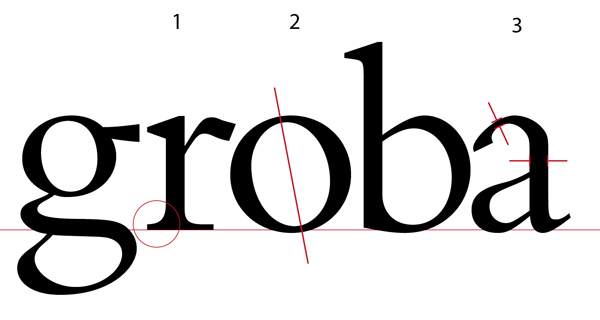
They also were more decorative than those modeled directly from the hand. These letterforms were thinner and more delicate than those before it, which both allowed the ink to bleed on the page without overly distorting the words and used less ink.

He was the first to deviate from a purely handwritten-style to make letters that would read better when printed. Garamond was the first to craft letters to the medium. Prior to Garamond’s work, the practice of making type was to make as exact as possible replicas of a scribe’s handwriting. While seeing the differences between many of the old-style typefaces today can be hard for the untrained eye, it is important to note the true significance of Claude Garamond’s place in the history of type. Some are modern interpretations, some are recreations of typefaces from the late 1500’s modeled after the original punches and a few are faithful modern recreations based on the original punches. It should also be said that not all of the Garamond’s in the world are the same. After his death, sets of his punches found their way into the hands of foundries and served as inspirations for many different typefaces in addition to the many variations of Garamond. The original punches, long slender metal rectangles with individual letterforms carved into the ends, were finely-tuned and perfected during the early to mid 1500’s up until Claude’s death in 1561. What we now know as Garamond are modern interpretations of fonts that were inspired by drawings which were modeled after the punches of Claude Garamond. Named for the French punch-cutter Claude Garamond, the typeface in its current form has a foggy past. Like David, Garamond came quietly into the world yet has been a marker to which everything that has come after it is measured. It is elegant while never feeling overly ornate or showy.Ĭlassic and classy, Garamond has maintained a high level of admiration and continued use that is very unlikely since it pre-dates all other typefaces. Reading its beautifully imperfect letters feels like reading a renaissance manuscript. It puckers and bloats in delicate ways like ink swelling within paper fibers. Even in today's digital forms, Garamond evokes the hand. It is a timeless masterpiece created by a classical craftsman and to this day is a cherished piece of history. Garamond is Michelangelo's David to the type world. 2 and you’ll see this “box” of the font News Gothic.Contact Copyright © 2013-2021 Jonathan Cunningham. Presently, fonts refer to a digital file containing various letterforms rather than a box of metal types (can you imagine shuffling through those every time you wanted to pick a new font for your pretty design?).

When referring to the design of the collection (the way it looks) you call it a typeface.” – Mark Simonson, designer (whether it’s a case of metal pieces or a computer file) is a font.

“The physical embodiment of a collection of letters, numbers, symbols, etc. Mark Simonson, designer of Proxima Nova (check out our client’s website,, to see it in action), explains the difference quite eloquently: Typographically, John, Jack, and Tom are each fonts and together they make up the Smith typeface. Together, the brothers make up the Smith family. Each brother shares the same face, but their weights vary – read: one is slim, the other is rather rotund. Here, you see a family of three twins: John Smith, Jack Smith, and Tom Smith.


 0 kommentar(er)
0 kommentar(er)
